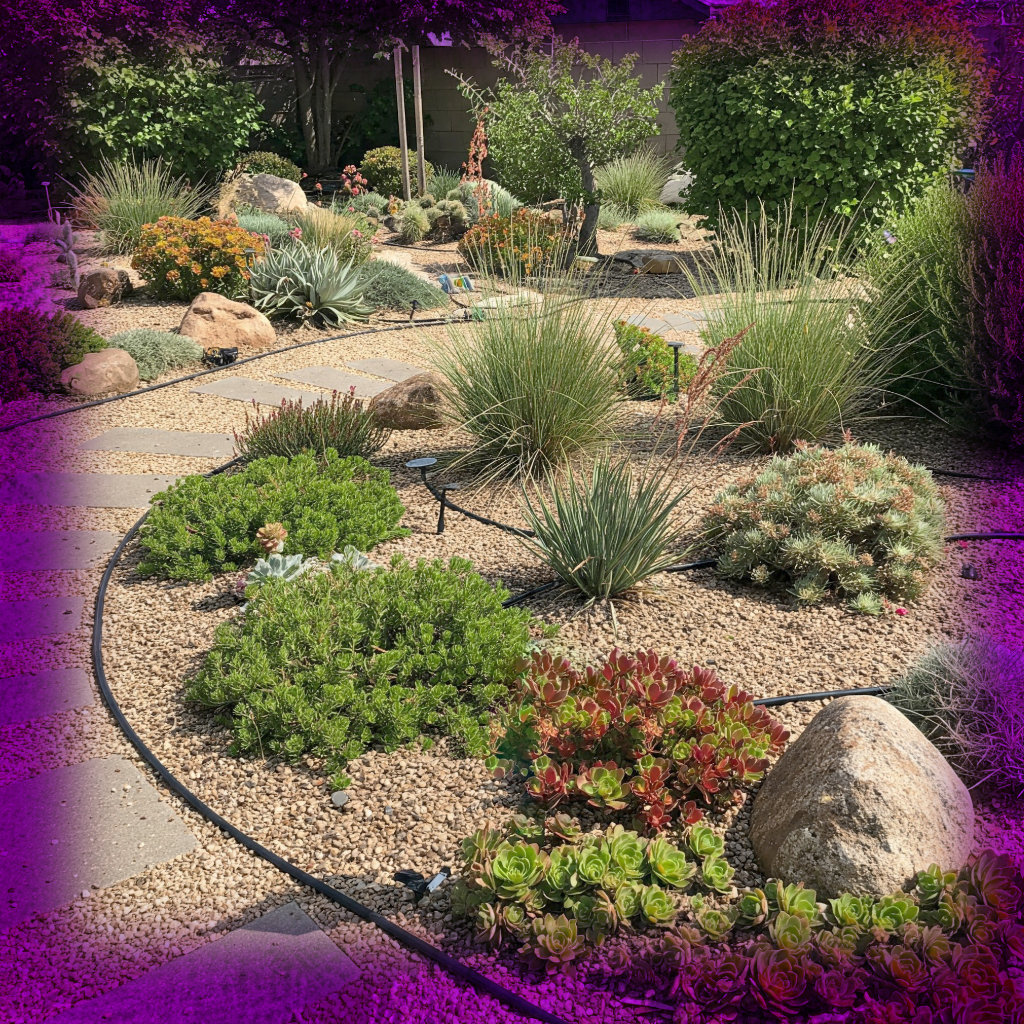In an era of water scarcity and rising utility costs, xeriscaping emerges as a brilliant solution for eco-conscious homeowners. This landscaping philosophy, rooted in water efficiency, transforms barren yards into vibrant, low-maintenance retreats—without draining your wallet. Contrary to popular belief, creating a drought-tolerant oasis doesn’t require a lavish budget, just ingenuity and thoughtful planning.
What Is Xeriscaping?
Xeriscaping (from the Greek xeros, meaning “dry”) is a landscaping method that minimizes water use through strategic design and plant selection. Beyond conserving resources, it reduces maintenance, supports local ecosystems, and slashes water bills. Far from being a barren wasteland, a well-executed xeriscape bursts with color, texture, and life.
Budget-Friendly Xeriscaping Principles
Planning Before Planting
A meticulous plan prevents costly mistakes. Sketch your yard’s sun exposure, soil type, and drainage patterns. Group plants with similar water needs together—a practice called hydrozoning—to maximize efficiency.
Smart Soil Preparation
Amend compacted soil with compost or sand to improve drainage. Healthy soil retains moisture better, reducing irrigation needs. For clay-heavy earth, consider raised beds filled with gritty, well-draining mixes.
Choosing the Right Plants
Opt for native species adapted to your climate—they require less water and care. Drought-resistant perennials like lavender, yarrow, and penstemon offer beauty without constant attention.
Efficient Irrigation Strategies
Drip irrigation systems deliver water directly to roots, minimizing waste. Alternatively, soaker hoses buried under mulch provide slow, deep watering. Schedule irrigation for early morning to reduce evaporation.
Mulching for Moisture Retention
A thick layer of mulch (3–4 inches) suppresses weeds and locks in moisture. Use affordable options like wood chips, straw, or even crushed gravel for a polished look.
Hardscaping on a Budget
Incorporate pathways, patios, or rock gardens using repurposed materials. Salvaged bricks, broken concrete (“urbanite”), or local stones add structure without splurging.
Step-by-Step Guide to Affordable Xeriscaping
Assessing Your Yard’s Conditions
Note areas of full sun, partial shade, and poor drainage. Use these microclimates to your advantage—place sun-loving succulents in bright spots and shade-tolerant grasses under trees.
Designing a Drought-Tolerant Layout
Start small with a single bed or corner. Curved lines and varied heights create visual interest. Incorporate focal points like a boulder or ornamental grass cluster.
Sourcing Low-Cost Materials
Check local classifieds for free rocks, mulch, or plants. Construction sites often discard usable materials. Nurseries may sell “scratch-and-dent” plants at discounts.
DIY Hardscape Ideas
Build a dry creek bed using gathered stones. Create a mosaic patio with broken tiles. Even a simple gravel path adds texture and function.
Propagating Plants for Free
Divide perennials like sedum or salvia and trade cuttings with neighbors. Many drought-tolerant plants root easily in water or soil.
Best Drought-Resistant Plants for Thrifty Gardeners
Native Perennials That Thrive on Neglect
- Black-eyed Susan (Rudbeckia hirta): Golden blooms that attract pollinators.
- Russian Sage (Perovskia atriplicifolia): Fragrant, silvery foliage with purple spikes.
- Agastache (Agastache spp.): Long-blooming and deer-resistant.
Succulents and Cacti for Arid Climates
- Hens-and-Chicks (Sempervivum tectorum): Spreads readily, perfect for rock gardens.
- Prickly Pear (Opuntia spp.): Edible pads and striking flowers.
Ornamental Grasses That Add Texture
- Blue Fescue (Festuca glauca): Compact and icy-blue.
- Mexican Feather Grass (Nassella tenuissima): Delicate, wispy movement.
Ground Covers to Suppress Weeds
- Creeping Thyme (Thymus serpyllum): Fragrant and walkable.
- Ice Plant (Delosperma cooperi): Vibrant flowers and succulent leaves.
Creative Cost-Saving Techniques
Swapping Plants with Neighbors
Join local gardening groups or organize a plant swap. One person’s thinned-out sedum is another’s treasure.
Using Recycled Materials for Hardscaping
Old wine bottles make quirky edging. Discarded pallets can become vertical planters. Let creativity trump expense.
Rainwater Harvesting for Irrigation
Install a simple rain barrel under a downspout. Even a trash bin with a spigot works for small spaces.
Repurposing Household Items as Planters
Colanders, boots, or teapots add whimsy while recycling. Ensure proper drainage by drilling holes.
Maintaining Your Xeriscape Without Breaking the Bank
Low-Effort Weed Control
Thick mulch minimizes weeds. Hand-pull intruders early before they seed.
Seasonal Care Tips
Cut back perennials in late winter. Divide overcrowded plants every few years to rejuvenate them.
Pruning for Long-Term Health
Remove dead growth to encourage airflow. Shape shrubs sparingly to maintain natural forms.
Natural Pest Deterrents
Marigolds repel nematodes. Garlic spray discourages aphids. Avoid pricey chemicals.
Common Mistakes to Avoid
Overwatering Out of Habit
Established xeriscapes need minimal water. Stick to a “less is more” approach.
Poor Plant Placement
Sun-loving plants in shade become leggy. Research each species’ needs before planting.
Ignoring Soil Health
Compact soil starves roots of oxygen. Aerate annually if needed.
Skimping on Mulch
Bare soil loses moisture faster. Replenish mulch as it decomposes.
Success Stories: Real-Life Budget Xeriscapes
Urban Yard Transformations
A Los Angeles couple replaced their lawn with salvaged concrete and native sage, cutting water use by 70%.
Suburban Lawn Conversions
An Arizona family used free rocks from a nearby quarry to create a desert-inspired front yard.
Apartment Balcony Adaptations
A renter in Texas arranged potted agaves and gravel in discarded crates for a chic, water-wise retreat.
Final Tips for a Stunning, Low-Cost Xeriscape
- Patience Pays Off: Plants take time to fill in. Enjoy the evolving landscape.
- Embracing Imperfections: Nature isn’t manicured. Let plants sprawl and self-seed.
- Celebrating Sustainability: Every drop saved helps the planet—and your wallet.
By marrying frugality with creativity, xeriscaping becomes an accessible, rewarding endeavor. Start small, think sustainably, and watch your dry garden flourish.

